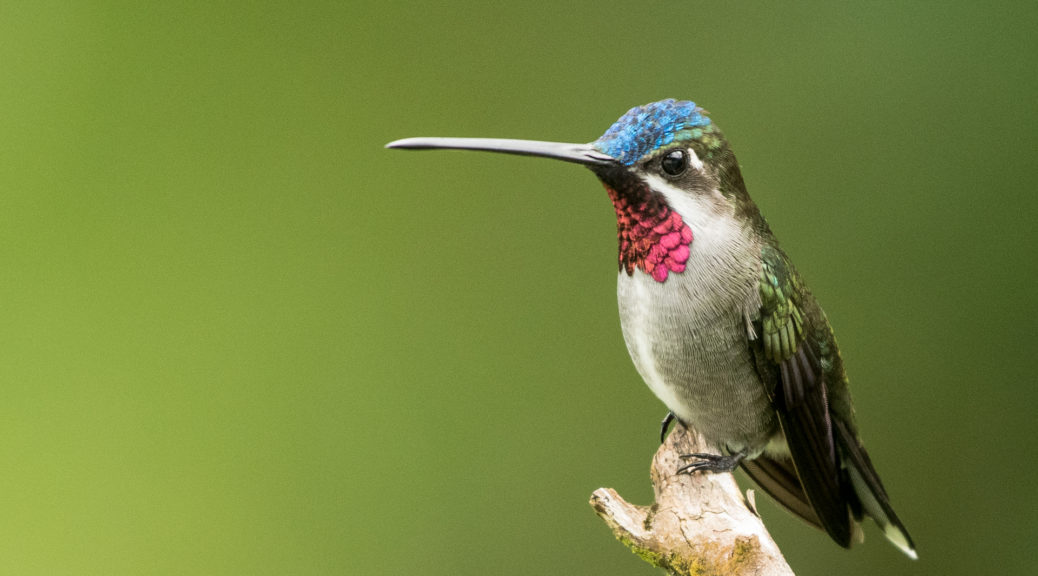Every year, a group of locals and travelers participate in The Big Sit at the Asa Wright Nature Centre.
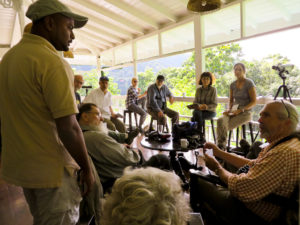
Birdwatcher’s Digest‘s The Big Sit! worldwide bird survey is pretty well known by now. On one designated day every year, you bird-watch from dawn till dusk at one particular site, never straying outside of a five meter radius, documenting the number of species you see or hear.
This year, like many other years, field guide author Martyn Kenefick participated in The Big Sit. Caligo Venture‘s group was lucky enough to be at the Centre during the event … the following is Martyn’s account of the big day.
“This was our fourth participation in this event. It always happens in early October and I fully understand that in many parts of the world, this coincides with southbound migration in full swing. Here, in Trinidad, however it also clashes with weather uncertainty, as we are still in the wet season … and Saturday, October 7 was a doozie.
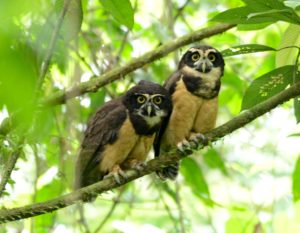
Rules of the game are the same as always. You sit/stand in a specific area for as long as stamina or boredom permits and log all the species seen or heard from that location.
Nightbirds are never a major feature from the balcony, but last year I did have an Oilbird fly across in front of me, backlit by the lights of Arima town and both Spectacled Owl and Common Potoo can occasionally be heard in the pre-dawn hours, so an early start was planned. When my alarm clock went off at 3:30 AM, the rain was pounding on my roof — not an auspicious start to proceedings. Nevertheless, I was in position by 4:30 AM, the rain had more or less petered out but there was still a dampness in the air, with mist floating up and down the valley. By 5:30 AM, the only sound had been the local frogs — thank heaven for Centre-grown coffee. Then the first rays of dawn broke over the eastern rim of the valley, the mist receded, and the forest began to wake up.
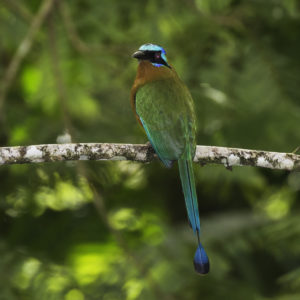
Better late than never, a Ferruginous Pygmy-Owl announced its presence at 5:36 AM, shortly followed by a Trinidad Motmot, hooting from bushes nearby. Five minutes later hummingbirds began their tour of our vervain bushes and sugar-water feeders. First a Copper-rumped (taken for granted by local birders as they are widespread and common in both islands. However, the only other country in the world where they occur is nearby Venezuela, so globally, a really important species). Then the new bully on the block, White-chested Emerald. This aggressive little sprite has taken advantage of the temporary absence of White-necked Jacobins (most are now in continental South America, due to return around Christmas) to flex their muscles, acting as wardens of all sugar water feeders and prepared to see off “all comers.” By 6:00 AM, we had accumulated 13 species under the belt, including such Centre favourites as Tufted Coquette and Long-billed Starthroat whilst the first of about a dozen Channel-billed Toucans to be seen throughout the day put in an appearance.

Things were looking up; the clouds were high in the sky and new species were added over the next 30 minutes with regularity. Our common thrushes, tanagers, and honeycreepers all took advantage of the fruit laid out on our bench feeders; Scaled Pigeons in their “twos and threes” flew up and down the valley whilst squadrons of Crested Oropendolas flitted from tree to tree. The sun peeked through the clouds around 6:30 AM, inviting an extra splash of color as both Blue Dacnis and Turquoise Tanagers fed happily in Trema and Wild tobacco trees, whilst a Squirrel Cuckoo flew across in front of us. With breakfast being announced for our guests, the species total as of 7:30 AM had risen to 32.
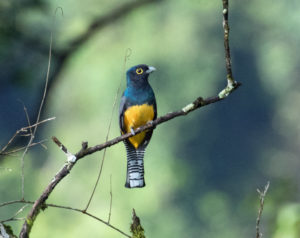
Whilst the sun stayed out, new passerine species numbers trickled through. Our first Forest Elaenia and Boat-billed Flycatchers were logged and Mukesh picked out a male White-bearded Manakin in a fruiting Melastoma tree. Over the course of the next hour or so, Bearded Bellbirds travelled up to the fruiting Jamoon bush in front of us, putting on a great show, as did a pair of Guianan Trogons which called repeatedly whilst perched out in the open. Flying insect activity in the air above the valley must have been high as parties of Gray-rumped Swifts dashed to and fro. Much less common however, were the few, larger Chestnut-collared Swifts that joined in.
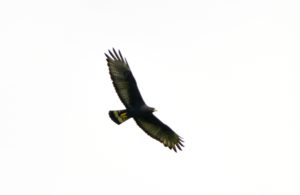
Weather-wise, this was now the nicest part of the day. The sun was out and we were warming up. Caleb trained his eyes skywards, picking out both Zone-tailed and Short-tailed Hawks amongst the circling Black and Turkey Vultures and the sun encouraged both Bright-rumped Attila and Trinidad Euphonia to call. The former was way off down the valley, but the latter was close by, no doubt feeding on mistletoe in the tree-tops.

Then the clouds closed in and it drizzled on and off right through until lunchtime. By noon, we had only added a further six species, including our final hummingbird of the day, a Rufous-breasted Hermit. Both Lineated and Golden-olive Woodpeckers came in close and we logged two much less expected species: a tiny Southern Beardless Tyrannulet perched up right in front of us momentarily, shortly followed by two Lesser Swallow-tailed Swifts, both new for our five year cumulative “Big Day” species total. Indeed this is the first time that the swallows have been seen at Asa Wright Nature Centre.

The best way to describe the afternoon is the fact that over the course of the next six hours, we only added four more species. Ann came up trumps with a perched adult White Hawk looking decidedly miserable in the rain and at 4:27 PM we finally found a pair of Golden-headed Manakins feeding in the Jamoon. There, the list ended.
I stuck it out until last light at 6:00 PM in the vain hope of a Short-tailed Nighthawk (it had been showing on each of the previous three evenings). Perhaps it did fly past, but by then the mist had all but encompassed the entire valley.
So we ended up with a modest 63 species for our efforts; our lowest total and ten short of the record. All was not doom and gloom however, this did include no less than eight species not previously recorded for the event.
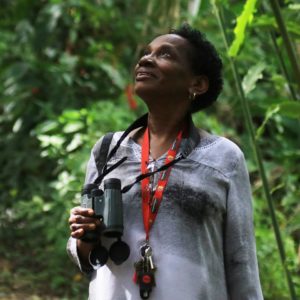
Finally my sincere thanks to our Lodge Manager Ann, guides Mukesh and Caleb, and the many members of the Keith Hansen tour group who did their best to keep my spirits from dampening through much of the day.
Postcript — isn’t it always the case that “the day after” is so different. Sunday heralded bright morning sunshine with Great Antshrike, Cocoa Woodcreeper, and Tropical Pewee all performing in front of the balcony before breakfast (and of course all were absent the day before). Well, there’s always next year ….”
Martyn Kenefick

